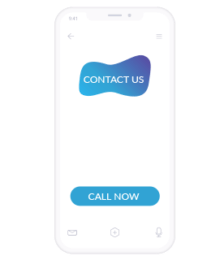Call Center Outsourcing7 minute read
6 Call Center Strategies for Engaging Mobile Customers
For businesses of all types, most customer interactions come via mobile devices. Here are 6 call center strategies for best engaging today’s mobile customer.

It’s no secret that the success of customer care in 2019 (and beyond) depends a great deal on just how well a business integrates modern communications technologies into its service operations. Blame it on Steve Jobs: The introduction of the iPhone back in 2007 was a groundbreaking moment, not just for American culture, but for business as well.
In the decade-plus since, the use of smartphones has grown at a truly amazing rate. According to the Pew Research Center, 77% of Americans—or almost 8 in every 10—reported owning a smartphone in 2018, compared to just 35% in 2011. Even more remarkably, 95% of all people in the U.S. reported owning a cellphone of some type in 2018. And these figures represent all Americans, young and old, spanning all economic backgrounds.
But the proliferation of all these phones doesn’t necessarily mean that more people are calling customer service. Quite the opposite, in fact: The real breakthrough of the smartphone is the access it gives users to a dizzying variety of alternate communications methods, such as website browsing, instant messaging, social media apps and many, many others.
This steady increase in communications channels is the real challenge to businesses attempting to formulate an effective call center strategy now and in the future. In other words, if you haven’t already expanded the customer experience your business offers to embrace alternate communications channels, you can no longer afford to wait.
“Just as the savviest old-school business leaders embraced online selling at an early stage and leveraged it for their own growth, instead of being defeated by it, today’s businesses have the same choice: Embrace the new trends in contact center technology, or be left in the dust by the competition,” as our experts explained in a recent look at the evolution of call center technology.
“79% of Americans own a smartphone in 2018, up from 35% in 2011.” Click To Tweet
6 Call Center Strategies for Engaging Mobile Customers
The good news is that, for businesses that haven’t yet embraced these trends and formulated a call center strategy to engage with mobile-based customers, it’s not too late to get started. Here are six steps to getting the ball rolling.
1. Move beyond voice. There’s certainly still a need to engage with customers via traditional phone interactions (although these needs are increasingly, and more efficiently, being met via IVR rather than traditional phone lines). But the need to move beyond voice interaction is far greater.
Think of the myriad ways in which customers use their phones today: mobile site browsing, social media interactions, instant messaging apps and news alerts about their favorite brands. The list goes on and on. And it makes sense: Engaging via text or chat is faster and much more convenient than making a call (and potentially waiting in line for the next available agent).

The upshot? If you don’t yet offer a live-chat function on your website, an option to send customer care a text instead of making a call, or a LinkedIn group where your customers can get insider info on your business, it’s time to fix that.
2. Boost your social media profile. And that leads us directly to the next essential call center strategy for engaging mobile customers: Mastering the art of social media engagement.
Facebook, Twitter, LinkedIn, Instagram—these and other social networks are now many customers’ first choices for engaging with a brand. In 2019, it’s no longer enough to simply have a presence on these networks. Real engagement requires continuous maintenance in a way that not only engages customers, but satisfies their expectations for online interaction with your brand.

And the trick to doing that is to “focus on educating your community and fostering trust—not selling your product or service,” writes Ali Mirza for Forbes. “One way to build this trust is to provide free resources inside your Facebook group, such as free e-books, PDFs, minicourses or cheat sheets. Then design a strategy to make your free offers lead into paid options.”
Focus on educating your community and fostering trust — not selling your product or service.
3. Get visual. The incredible growth and popularity of direct-to-user video, such as YouTube and Vimeo, makes it clear that smartphone users love watching videos. And why not? Videos can be informational and entertaining at the same time—while also being used to boost your brand or promote a sale.

Put simply, a video is a quick, easy way to engage with the people who are discovering your brand via mobile browsing. But too few businesses actually create videos that engage the people they’re trying to reach.
“Produce short videos to share customer testimonials, stories, lifestyle tips and business advice,” advises Mirza. “Make it real. You don’t need fancy equipment. Your smartphone will do the job. Make sure your video content is engaging and speaks to the needs of those interested in your business.”
“Engaging video content speaks to those interested in your business.” Click To Tweet
4. Utilize remote call center agents. Savvy business leaders have responded to mobilization of customers by ensuring the agents who interact with them are using the same technologies. Remote call center agents, such as those in the Working Solutions network, are based in their own homes, using the same apps and websites as the customers with whom they interact.

This “allows for more flexibility to respond to customers through the channel they prefer,” writes customer experience expert and Forbes contributor Blake Morgan in a look at the future of customer care. It also allows for the human factor—the need to engage with customers via a real person, instead of fully automated responses.
“Although the technology exists to chat or email a contact center quite easily, there is still a learning curve involved,” Morgan explains. “The personal touch of talking to someone on the phone just can’t be replaced by texting, bots or email. Humans are needed for advice and decision-making.”
5. Enlist agents with skill and expertise. If that human factor is essential, so too is the need for those humans to offer real skill and expertise. Today’s customers expect not just speedy responses to their inquiries, but also efficiency, friendliness, and, above all else, effectiveness. Having call center agents who aren’t really engaged with their jobs is no longer good enough.

This leads to another benefit of using remote agents via the on-demand model of customer care. These agents have these careers by choice. They enjoy the lifestyle and benefits of working from home—and these are real, quality-of-life benefits like the ability to avoid a commute and spend more time with the families. Satisfaction with these benefits translates directly to satisfaction with their jobs, and that’s bound to lead, in turn, to measurable customer satisfaction, too.
Even better, because these agents have chosen to work in customer care, they’re good at what they do. They specialize in communicating via the channels that customers are using. And partnering with a company that offers a network of thousands of such agents across the continent means getting access to a wide variety of skills. This includes agents who specialize in any given technology, for instance, or a particular industry, including travel, healthcare, finance or a huge variety of others—all at your fingertips.
6. Partner with a virtual, on-demand call center. As important as it is to use skilled agents, there’s still a real need to make use of automation and artificial intelligence (AI), too. Experts agree that doing so can add efficiencies to the customer-care process and ensure that, when a live agent is required, that agent is being used in the best way possible.
“AI and automated responses can be efficient in solving many customer issues, especially for questions like tracking products, getting refunds and answering basic information,” explains Morgan. Such systems could also “analyze customer interactions before routing the call to the correct associate,” she adds.
“Instead of having to explain the situation or talk through a phone tree, AI could know the customer’s history with the brand and their situation and then forward the call to an agent who can solve the problem right away.”
Setting up this level of automation can be a daunting task—yet another reason for enlisting the expertise of an on-demand, customer-care specialist like Working Solutions. Such a partnership gives you all of these benefits in one convenient package, eliminating the need to maintain your own call center, hire and manage agents, purchase and maintain hardware and software, and a myriad of other must-dos to deliver true customer care success.
If you’re interested in learning more about how on-demand services can provide the call center strategy you need to succeed, there’s no time to lose and make the next move.

Contact us today to discover the solution that’s best for your business — in 2019, and well beyond.
Learn more.
This Might Interest You...
This website uses cookies to personalize and improve your experience. Continue browsing our site if you agree to our Cookie Policy or feel free to Manage Cookies yourself.


